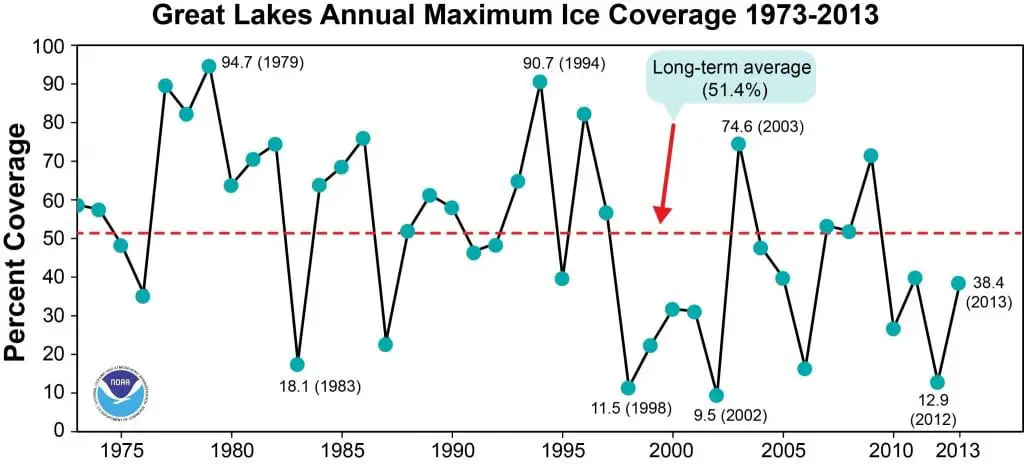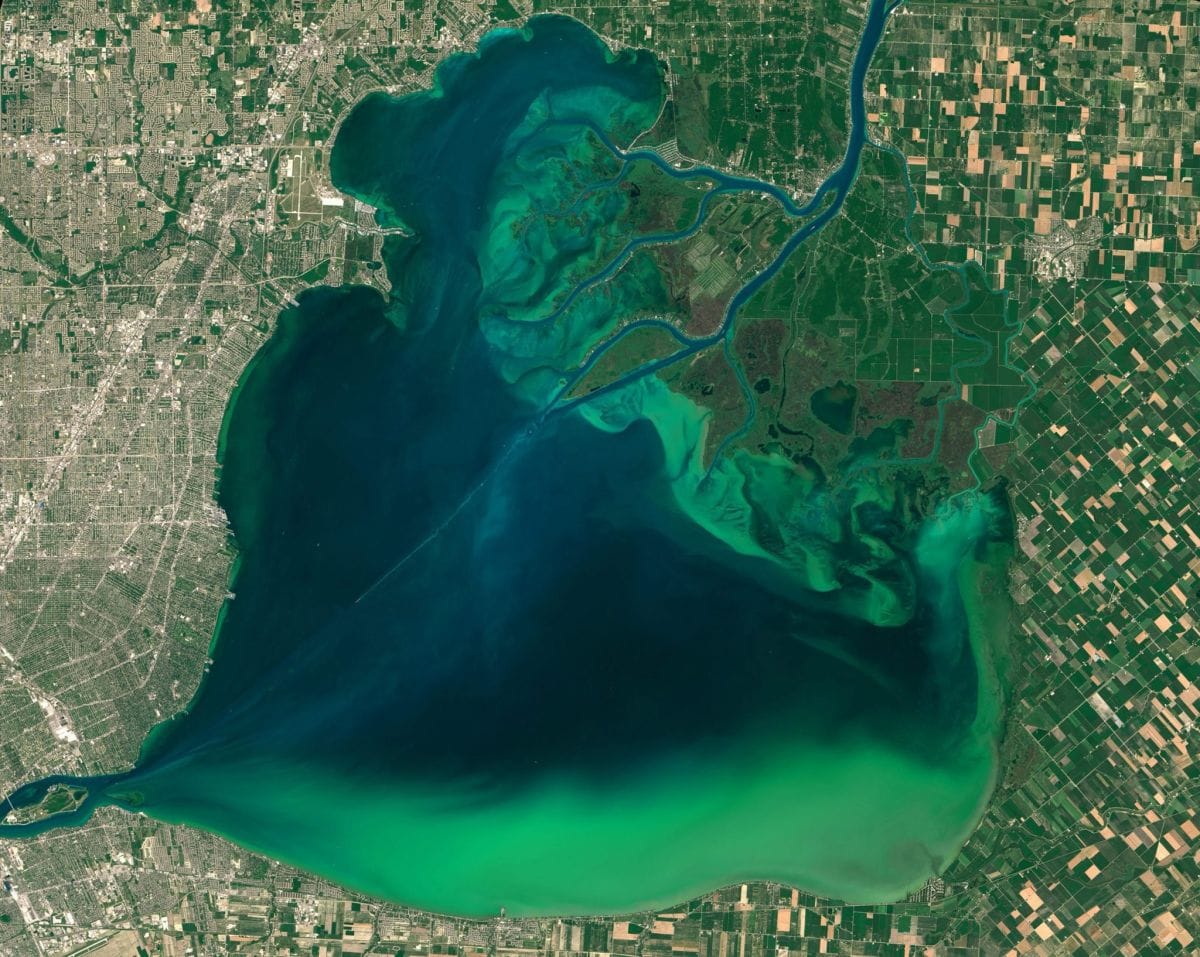In a report issued on January 16, 2015, scientists determined that it was the Earth’s warmest since 1880, according to two separate analyses by NASA and National Oceanic and Atmospheric Administration (NOAA).
Since 1880, Earth’s average surface temperature has warmed by about 1.4 degrees Fahrenheit (0.8 degrees Celsius), a trend that is largely driven by the increase in carbon dioxide and other human emissions into the planet’s atmosphere. The majority of that warming has occurred in the past three decades.
Michigan and other Great Lakes state experienced a different experience due to an arctic polar vortex setting over the region. This unique weather pattern resulted in close to 90% ice coverage across the Great Lakes. Currently ice is covering 22% of the lakes.
The temperature analysis incorporates surface temperature measurements from 6,300 weather stations, ship- and buoy-based observations of sea surface temperatures, and temperature measurements from Antarctic research stations.
Related Reading
- Drinking Water Contamination in Caseville’s Water System
- Does the Great Lakes Have a Stonehenge Site?
- What to Include an Emergency Car Kit
- Lame Duck Republican Governors Attempt Make It Easier to Steal Great Lakes Water





